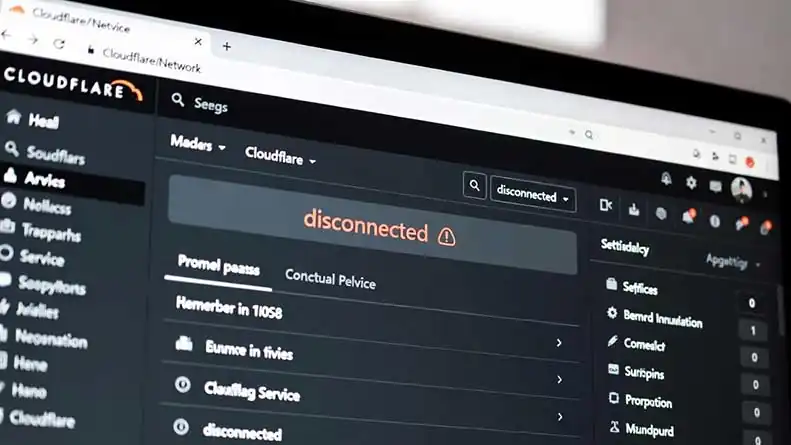The Company You’ve Never Heard Of Just Broke the Internet (Again)
When Cloudflare goes down, a fifth of the internet goes with it. And that should probably worry us.
On Tuesday morning, millions of people around the world tried to open their favorite apps and websites. They wanted to check X, formerly known as Twitter. They wanted to chat with ChatGPT. They wanted to design something on Canva or scroll through Grindr.
Instead, they got error messages.
For several hours, huge chunks of the internet simply stopped working. Not because of a cyberattack. Not because of a natural disaster. But because one company—a company most people have never even heard of—had a bad morning.
That company is called Cloudflare. And the fact that its problems can make so much of the internet disappear should make all of us a little nervous.
You Might Like it: AWS Outage 2025: How One Glitch Shook the Internet
The Invisible Company Running the Internet
Here’s something most people don’t know: when you visit a website, you’re not connecting directly to that website. You’re going through middlemen—companies that make the internet faster, safer, and more reliable.
Cloudflare is one of the biggest middlemen. In fact, it handles about one-fifth of all web traffic on the planet. One. Fifth.
Think about that for a second. Every time you check social media, stream a video, or shop online, there’s a one-in-five chance that your data is flowing through Cloudflare’s network.
The company’s job is to make websites load faster and protect them from getting overwhelmed by too much traffic or attacked by hackers. Most of the time, they do this job invisibly and brilliantly. Websites work. Apps load. The internet feels like magic.
Until it doesn’t.
When the Backbone Breaks
At 6:40 a.m. Eastern Time on Tuesday, something went wrong inside Cloudflare’s systems. The company noticed what it delicately called “internal service degradation.”
Translation: part of their network stopped working properly.
Almost immediately, users around the world started flooding Downdetector—a website that tracks internet outages—with complaints. At the peak, nearly 5,000 people were reporting problems with Cloudflare. But that number barely scratches the surface of how many people were actually affected.
Because when Cloudflare has issues, thousands of websites and apps that depend on it have issues too.
X went down. ChatGPT became unreachable. Canva wouldn’t load. Grindr stopped connecting people. And those were just the high-profile casualties. Countless smaller websites and services that regular people use every day simply vanished from the internet.
For people trying to work, it was frustrating. For businesses operating online, it was potentially catastrophic. Every minute a website is down is money lost, customers annoyed, and trust eroded.
The Pattern We Can’t Ignore
Here’s the uncomfortable part: this keeps happening.
Last month, Amazon’s cloud service—another critical piece of internet infrastructure—went down. That outage took out Snapchat, Reddit, and thousands of other popular sites and apps. It caused what Reuters described as “global turmoil.”
Before that, there were other outages. And before that, more still.
We’ve built an internet that depends on a handful of massive companies. When one of them stumbles, millions of people feel it. When several stumble in quick succession, as we’ve seen recently, it starts to feel like the whole system might be more fragile than we realized.
Cloudflare’s stock price dropped about 5% in premarket trading Tuesday morning. Investors were spooked, and rightfully so. The company’s entire business is based on making the internet reliable. When they’re the ones causing reliability problems, it raises uncomfortable questions.
All Hands on Deck (But Is That Enough?)
To Cloudflare’s credit, they responded quickly. In an emailed statement, the company explained what happened: “We saw a spike in unusual traffic to one of Cloudflare’s services beginning at 11:20 UTC. That caused some traffic passing through Cloudflare’s network to experience errors.”
They deployed a fix. They said they were “all hands on deck” to make sure traffic would be served without errors. By 8 a.m. Eastern Time, reports of problems had dropped from nearly 5,000 to about 600. The internet was slowly coming back to life.
But “all hands on deck” only works when the problem happens. It doesn’t prevent the next one.
The Fragility Beneath the Surface
Most of us think of the internet as this robust, distributed thing that can’t really break. After all, it was designed by the military to survive nuclear war, right?
But the modern internet doesn’t work the way it was originally designed. Yes, the underlying infrastructure is still distributed. But on top of that infrastructure, we’ve built concentrated chokepoints.
Companies like Cloudflare, Amazon Web Services, and Google Cloud have become essential gatekeepers. They make the internet work smoothly—until they don’t. And when they don’t, there’s often no backup plan, no alternative route. You just wait for them to fix it and hope they fix it fast.
This concentration makes economic sense. It’s more efficient to have a few large companies handling internet infrastructure than thousands of smaller ones. They can invest in better technology, hire more engineers, and respond to threats more effectively.
But efficiency comes at a cost. And that cost is resilience.
What Happens Next Time?
By Tuesday afternoon, things were mostly back to normal. ChatGPT was answering questions again. X users were tweeting. Canva designers were designing.
The internet had survived another outage. Services were restored. Life moved on.
But the underlying problem remains. We’ve built a global communication system that billions of people depend on every single day for work, connection, commerce, and entertainment. And that system increasingly depends on a small number of companies that can bring it all crashing down with a single technical glitch.
Maybe the next outage will last minutes, like this one. Maybe it will last hours. Maybe, someday, it will last days.
And when that happens, we’ll all suddenly realize just how much power we’ve handed to companies most of us have never even heard of.
Cloudflare fixed Tuesday’s problem. Their engineers did their job. Service was restored.
But the bigger question remains: should one company’s bad morning be able to break the internet for millions of people?
Until we answer that question—really answer it, with regulations, redundancies, and alternatives—we’ll keep having these outages. We’ll keep watching the internet flicker and fail. We’ll keep hoping that the invisible companies holding it all together don’t have another bad day.
Because next time, we might not get lucky. Next time, it might not come back so fast.
And then what?
Based on reports of the Cloudflare outage on November 18, 2025.













